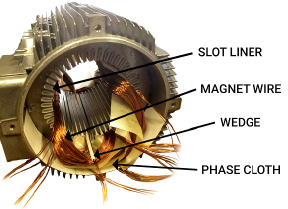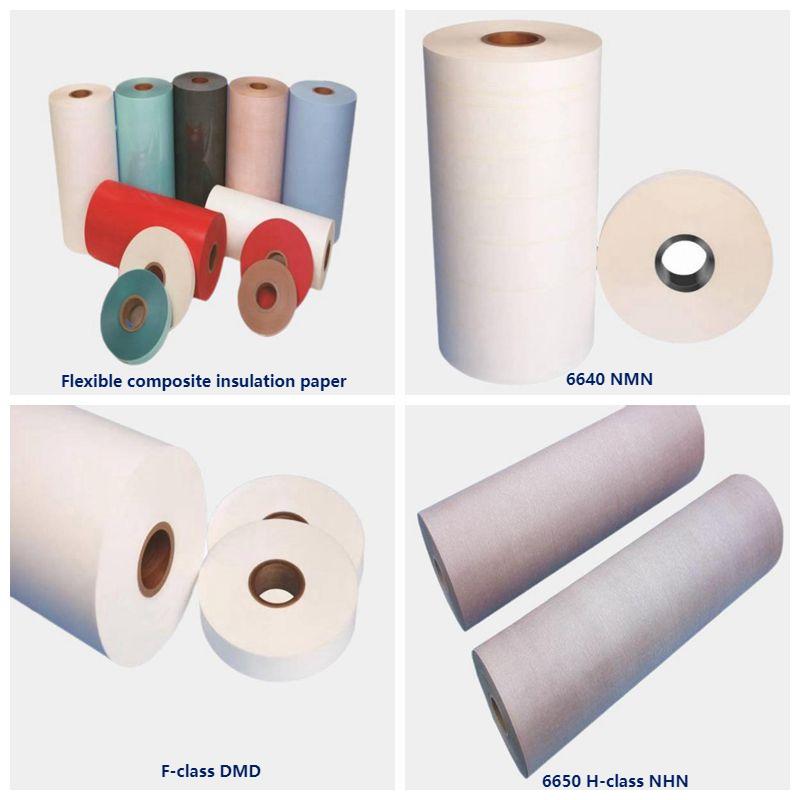Let's start simple. What is insulation? Where is it used and what is its purpose? According to Merriam Webster, to insulate is defined as "to separate from conducting bodies by means of nonconductors so as to prevent transfer of electricity, heat or sound." Insulation is used in various places, from pink insulation in a new home's walls to the insulation jacket on lead cable. In our case, insulation is the paper product that separates the copper from the steel in an electric motor.
The purpose of this slot and wedge combination is to keep the copper from touching the metal and hold it in place. If the copper magnet wire encounters the metal, the copper will ground the circuit. A winding of the copper would ground the system, and it will short out. A grounded motor needs to be stripped and rebuilt to be used again.
The next step in this process is the insulation of the phases. Voltage is a key component of phases. The residential standard for voltage is 125 Volts, while 220 Volts is the voltage of many household dryers. Both voltages coming into a home are single phase. These are just two of the many different voltages used in the electrical apparatus industry. Two wires create a single-phase voltage. One of the wires has power running through it, and the other serves to ground the system. In three-phase or polyphase motors, all of the wires have power. Some of the primary voltages used in three-phase electrical apparatus machines are 208v, 220v, 460v, 575v, 950v, 2300v, 4160v, 7.5kv, and 13.8kv.
When winding motors that are three-phases, the winding must be separated on end turns as coils are placed. The end turns or coil heads are the areas at the motor's ends where the magnet wire comes out of the slot and re-enters the slot. Phase insulation is used to protect these phases from each other. Phase insulation can be paper type products similar to what is used in the slots, or it can be varnish class cloth, also known as thermal H material. This material can have an adhesive or have a light mica dusting to keep it from sticking to itself. These products are used to keep the separate phases from touching. If this protective coating was not applied and the phases inadvertently touch, a turn to turn short will occur, and the motor will have to be rebuilt.
Once the slot insulation has been input, the magnet wire coils have been placed, and the phase separators have been established, the motor is insulated. The following process is to tie down the end turns. Heat-shrinkable polyester lacing tape usually completes this process by securing the wire and phase separator between the end turns. Once the lacing is complete, the motor will be ready for wiring up the leads. Lacing forms and shapes the coil head to fit inside the end bell. In many instances, the coil head needs to be extremely tight to avoid contact with the end bell. The heat-shrinkable tape helps to hold the wire in place. Once it is heated, it shrinks down to form a solid bond to the coil head and reduces its chances of movement.
While this process covers the basics of insulating an electric motor, it is imperative to remember each motor is different. Generally, more involved motors have special design requirements and need unique insulation processes. Visit our electrical insulation materials section to find the items mentioned in this article and more!
Related Electrical insulation Material for motors
Post time: Jun-01-2022







